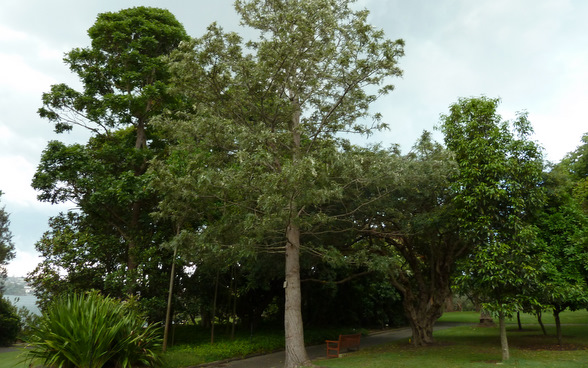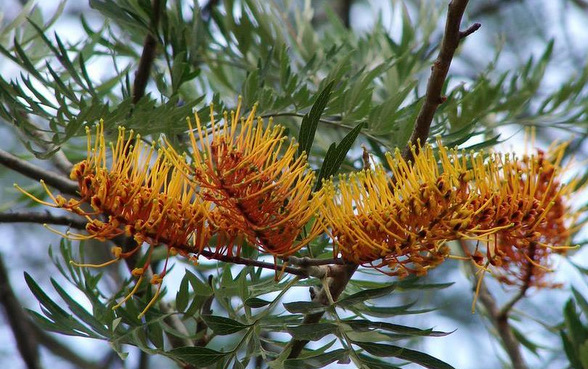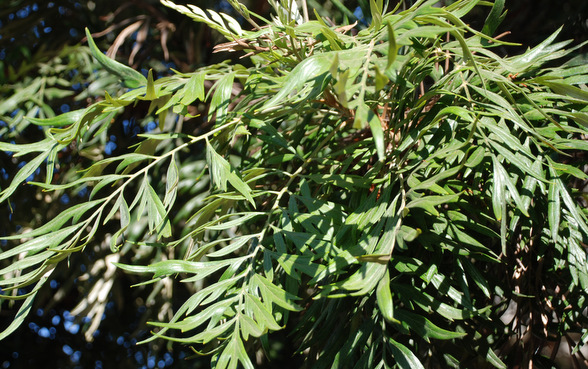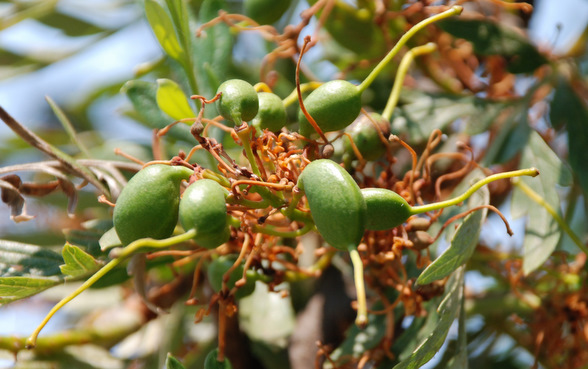Fruits/Seeds
A dark-brown, smooth seed pod, oval in shape and slightly flattened. It is about 2 cm long.
Field Guide
Improve your identification skills. Download your Silky Oak field guide here!

Named in 1830 by explorer and botanist, Allan Cunningham. The genus name Grevillea honours Charles F Greville who co-founded the Royal Horticultural Society, and the species name robusta refers to its large size.
Evergreen tree usually grows 20 – 30 m tall but can range from 8 – 40 m in height.
Silvery green and fern-like, green on the upper surface and paler underneath. They are 10 – 34 cm long and 9 – 15 cm wide, and consist of 11 – 31 segments that are narrow-elliptic to triangular in shape. The segments are 1.5 – 5 cm long and 2 – 10 mm wide, and they give the leaf a deeply divided appearance.
Golden yellow to orange, each one is about 2 cm long but they are arranged in pairs along the flowering stalk to give an overall length of 12 – 15 cm.
A dark-brown, smooth seed pod, oval in shape and slightly flattened. It is about 2 cm long.
Improve your identification skills. Download your Silky Oak field guide here!

First fully open single flower
Full flowering (record all days)
End of flowering (when 95% of the flowers have faded)
Not flowering


The Silky Oak is a very distinct tree and unlikely to be confused with anything else.